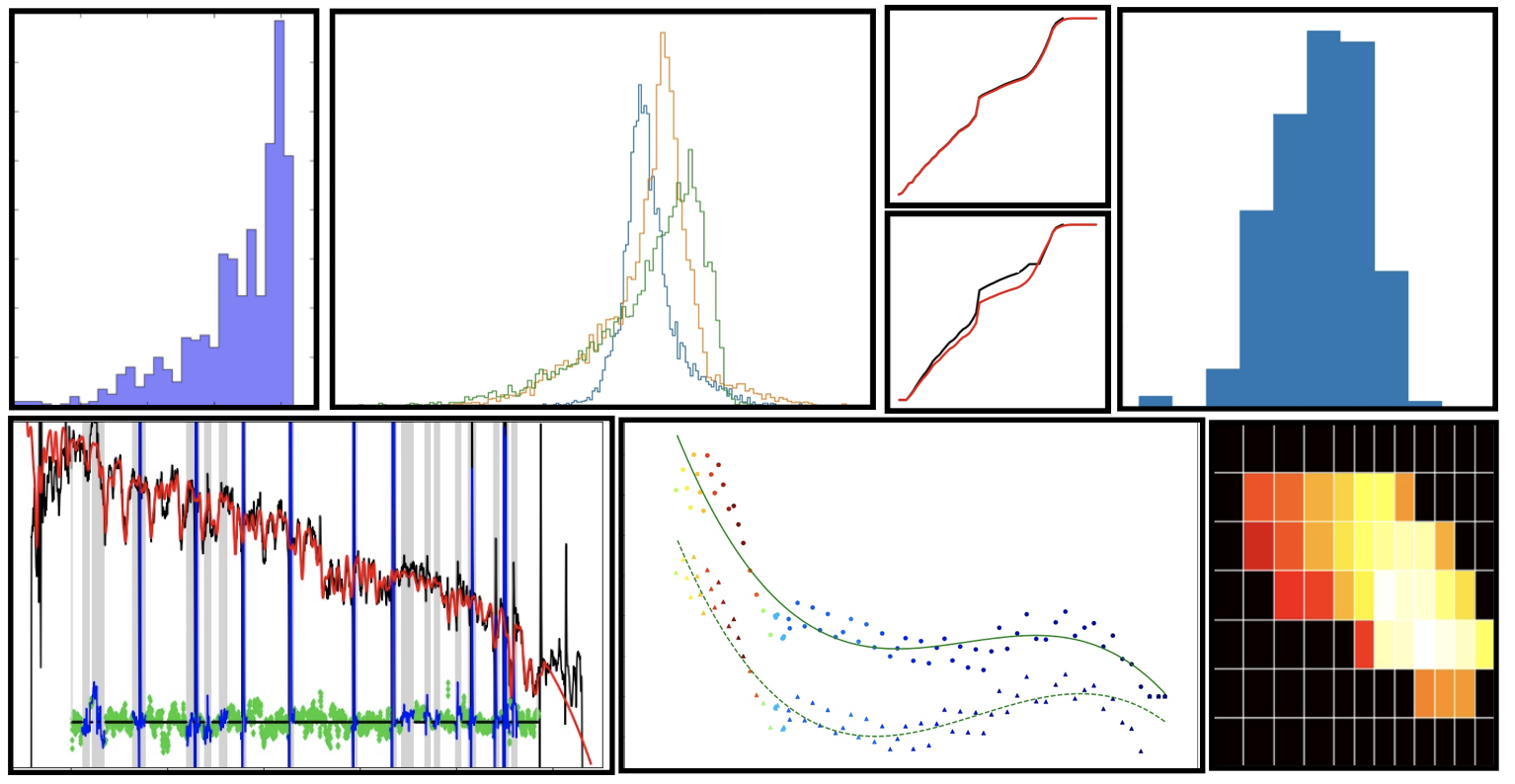I studied the properties of various sub-structures within galaxies, particularly focusing on their central regions. My work aimed to uncover the dynamic processes driving galaxy evolution. Additionally, I explored comparisons between the Milky Way and nearby galaxies, fascinated by their similarities and differences, to gain a broader perspective on galactic development and behavior.
Nuclear Star Clusters (NSCs) are incredibly bright and dense star clusters located at the centers of most galaxies. These clusters play a crucial role in understanding galaxy dynamics and evolution.
As part of the "Composite Bulges Survey," our research focused on NSCs in 33 massive disk galaxies within 20 million parsecs (Mpc) from Earth. NSCs are small but massive, with radii between 3 and 20 parsecs and masses ranging from hundreds of thousands to millions of times that of our Sun.
To study these NSCs, we utilized high-resolution images from the Hubble Space Telescope (HST) in both optical (F475W and F814W) and near-infrared (F160W) bands. This allowed us to examine the cores of galaxies in unprecedented detail. We applied advanced 2D image-fitting techniques to separate the light from different galaxy components, such as disks, bars, and bulges, to isolate the NSCs.
Key Findings:
Detection Rate: Nearly 80% of the galaxies in our sample contained discernible NSCs, a higher detection rate than previous studies. This underscores the importance of high-resolution imaging.
Physical Properties: We measured the sizes, masses, and brightness of the NSCs in all three bands. These measurements were used to estimate their masses accurately.
Relationships: NSCs in massive disk galaxies follow known relationships between NSC mass and radius, as well as galaxy mass and NSC mass. However, we found a wide range of NSC masses within a narrow range of galaxy masses, indicating diverse formation and evolutionary histories.
Alignment: NSCs are often aligned with the disks of their host galaxies but are less flattened, suggesting different formation mechanisms. We found no correlation between the properties of NSCs and the bars or bulges of their host galaxies, indicating that NSCs evolve somewhat independently.
NSCs and SMBHs: There is a wide range of ratios between the masses of NSCs and the central supermassive black holes (SMBHs) in these galaxies. This implies that both NSCs and SMBHs can coexist, potentially influencing each other's growth.
One of the goals of our project was to make our findings and data accessible to the broader scientific community. We compiled a comprehensive library of NSC properties and made it available in our published paper. By sharing our data, we hope to encourage further research and discoveries in the field of galaxy evolution.
Our research on NSCs has provided new insights into the complex interplay between different components within galaxies. By studying these dense star clusters, we gained a deeper understanding of how galaxies, including our own Milky Way, have evolved over time. This work represents a significant step forward in unraveling the mysteries of galaxy formation and evolution.
A Study of Nuclear Star Clusters in Nearby Galaxies
A-LIST: High-Resolution Simple Stellar Population Spectral Models in Near-IR
Understanding how galaxies like our Milky Way have formed and evolved over time requires studying their stellar populations. Since individual stars in distant galaxies can't be resolved, astronomers use a technique called integrated light spectroscopy. This method analyzes the combined light of many stars to gain insights into their properties.
A-LIST (APOGEE Library of Infrared SSP Templates) is a project focused on creating detailed maps of starlight. These maps are crucial for modeling the integrated light from galaxies using Simple Stellar Populations (SSPs). An SSP represents a group of stars that share the same age and chemical composition, making it easier to study their collective properties.
Traditionally, astronomers have studied galaxies using visible light. However, infrared light offers a clearer view because it is less affected by dust. Until now, there have been few detailed templates for studying galaxies in the infrared spectrum. A-LIST fills this gap by providing the highest resolution infrared templates available.
A-LIST utilizes data from the APOGEE survey, which has collected detailed observations of about 300,000 stars across the Milky Way. By combining this extensive dataset with advanced models of stellar evolution, A-LIST has created a comprehensive library of star "maps" that cover a wide range of ages and compositions.
To ensure the accuracy of these models, we compared them with actual observations of star clusters in the Andromeda galaxy (M31). The comparisons showed excellent agreement, confirming that our models accurately represent what we see in these clusters.
A-LIST provides astronomers with the tools to study star clusters in unprecedented detail, offering new insights into their history and structure. The entire A-LIST library is publicly available on GitHub, promoting collaboration and further discoveries in astronomy.
By offering these high-resolution infrared templates, A-LIST represents a significant advancement in our ability to explore and understand the cosmos.


